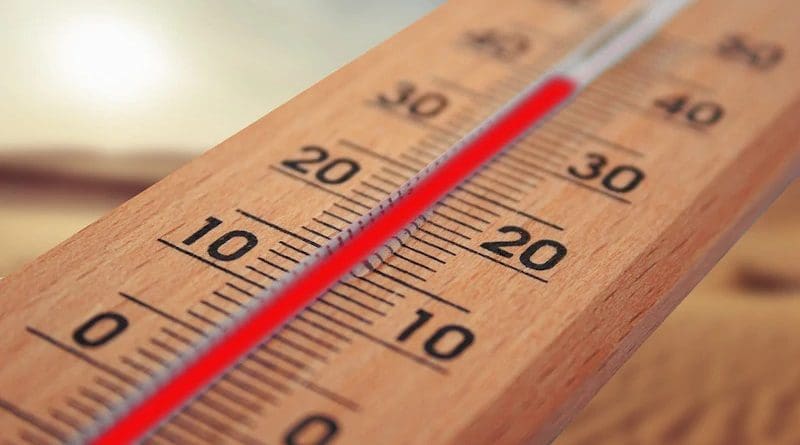Scorching Europe: Climate Change Fuels An Unprecedented Heatwave – OpEd
By Nadir Ali
Over the past three decades, temperatures in Europe have risen at a rate that is alarmingly higher than the average increase worldwide. The increase in temperature, which is twice the global average, has had negative effects on the societies, economies, and ecosystems of the continent. The World Meteorological Organization (WMO) recently released a report that highlights the fact that as long as this warming pattern continues, Europe will continue to experience extreme heat waves, destructive wildfires, devastating floods, and other negative effects of climate change.
The fact that warming in Europe is outpacing the global average indicates that climate change is already a reality and is only getting worse. The effects will worsen in the future, even if global efforts to reduce greenhouse gas emissions (GHG) are successful. However, if emission reduction efforts are successful in keeping the increase in global temperature well below the 2 °C limit imposed by the Paris Agreement, the severity of these impacts can be significantly reduced. Any emissions scenario that exceeds this cap would result in significantly more climate change and the consequences that come with it.
In particular, extreme weather events and climate-related hazards will become more frequent and intense in regions across Europe. Then it will have a negative impact on ecosystems, different economic sectors, human health, and well-being. Therefore, in addition to efforts aimed at reducing GHG, addressing the risks posed by global climate change requires targeted actions to adapt to its effects. To accommodate the unique conditions present in the various European regions and cities, adaptation strategies must be specifically designed. However, these conditions will occur more frequently as the planet warms over time, which calls for long-term planning that includes the implementation of sustainable agricultural models and efficient water management policies.
Although, temperatures in Europe have been significantly warming between 1991 and 2021, with an average rate of about +0.5 °C per decade. Between 1997 and 2021, the Alpine glaciers lost a distressing 30 meters of ice thickness as a result of this upward shift. Europe serves as a striking example of a warming world and a sobering reminder that even societies that have taken the necessary precautions are not immune to the effects of extreme weather events.
Similarly, northern regions of Europe will experience floods and fires even in the most optimistic scenarios, where warming is kept within the lower limits of the Paris Agreement of 1.5 or 2 degrees above the preindustrial global average. However, issues like drought, urban heat, and agricultural decline will be most severe in the southern regions, aggravating one of the main political fault lines in the European Union (EU). With the percentage of land regularly experiencing droughts increasing from 28% to 49% in extreme cases, the regions surrounding the Mediterranean will be especially vulnerable. Similarly, the potential for a drought lasting more than seven months each year is large in some areas of the Iberian Peninsula.
Similarly, the Sahara Desert in North Africa is included in the transition zone of the current climate context between the arid subtropics and the generally moist midlatitudes, which have a climate similar to that of the Pacific Northwest. Southern Europe is located within this zone. High summer temperatures have a propensity to accelerate the evaporation of precipitation that has already reached the ground, making spring drizzle the primary source of soil moisture.
However, the fact that these extreme temperatures occur in a season that is typically known for rain makes the situation worse. The region will experience an alarming increase in losses and damages unless there is a swift end to the burning of fossil fuels and a shift toward adjusting to a hotter, drier climate. Extreme heat waves, such as the one Europe experienced this summer and in years past, such as 2003-2020, are the result of a confluence of different factors. However, it appears that the interaction between atmospheric dynamics and surface conditions, also known as land-atmosphere feedback, plays a particularly important role among these variables.
Concludingly, in terms of human fatalities, heat waves pose the greatest threat among all extreme climatic events, especially in western and southern Europe. The region is more susceptible to heat-related risks as a result of the interaction between climate change, urbanization, and an aging population, and this vulnerability will only get worse in the future.
Nadir Ali holds a bachelor’s degree in Strategic and Nuclear Studies from the National Defense University, Islamabad, Pakistan. He has written for Modern Diplomacy, Pakistan Observer, Pakistan Today, and numerous other publishers.

